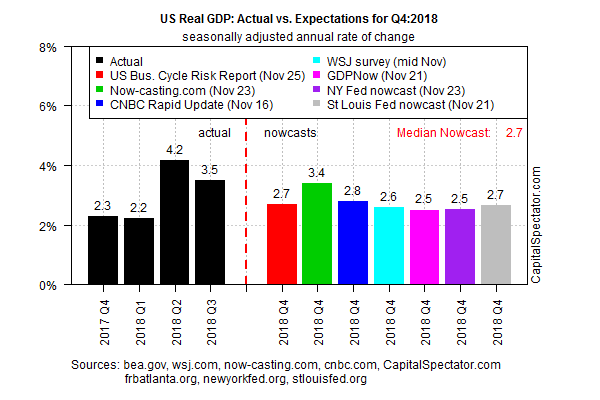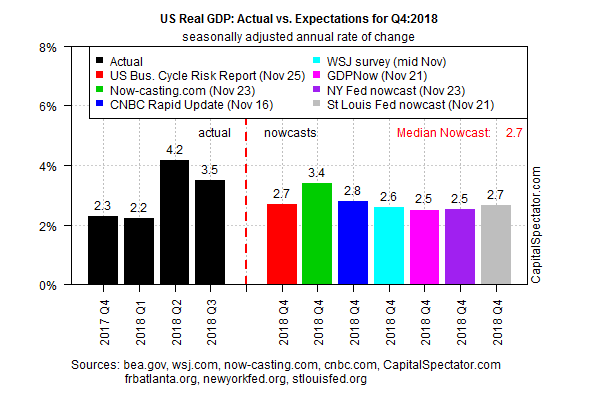
Economic activity for the US appears headed for a second quarterly slowdown in the final three months of this year. The projection is based on a set of nowcasts compiled by The Capital Spectator. The current median estimate: a 2.7% increase in real growth (seasonally adjusted annual rate), which is slightly below the previous outlook published in early November.
If the current median forecast is correct, US growth is on track to decelerate for the second straight quarter and reinforce the view that the economy peaked in this year’s Q2, when GDP expanded at a strong 4.2% pace.

Bloomberg highlights the macro headwinds that may be strengthening in the months ahead, noting that the blowback from a trade war with China and the fading stimulus from tax cuts are weighing on the outlook.
These challenges will test corporate America’s appetite to invest in the kind of faster-growth, higher-productivity future the Trump administration has promised. While such spending picked up in early 2018 after plodding along for years, a string of weak reports raises questions about the outlook. With firms using tax savings for buybacks and dividends rather than investment, the best gains may already be over.
Ian Shepherdson, chief economist for Pantheon Macroeconomics, recently wrote in a research note: “We’d be very surprised to see output growth picking up further from here; all the manufacturing cyclical indicators we follow have peaked, and some are declining.”
Last week’s preliminary estimate of the US Composite PMI for November, a survey based reading of economic activity, points to “warning flags” that support the case for anticipating a softer expansion. “In particular, growth of hiring has waned as companies grew somewhat less optimistic about the outlook,” said Chris Williamson, chief business economist at IHS Markit.
Goods exports also appear to also be coming under increasing pressure, often linked to trade wars having dampened demand. However, it should also be remembered that some pull back in growth was to be expected after October’s numbers were boosted by a post-hurricane rebound, especially given the historically high levels of production, order books and employment
















